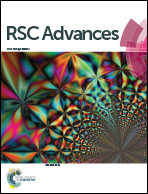Synthesis and characterization of highly defective mesoporous carbon and its potential use in electrochemical sensors
Abstract
A highly defective mesoporous carbon (DMC) was synthesized via a facile mass producible method for the fabrication of electrochemical sensing devices. The preparation of DMC with desired structural defects was conducted using nanosilica as a hard template, sucrose as a carbon source, and KNO3 as a defect causing agent. During the carbonization process, the oxygen gas released from the decomposition of KNO3, which was coated on a nanosilica template, reacts with carbon atoms and provides a highly defective mesoporous carbon. Raman spectroscopy was used to evaluate defect density while the porous structure and surface morphology of the synthesized materials were investigated with N2-adsorption/desorption, XRD, SEM and TEM techniques. Cyclic voltammetry and electrochemical impedance spectroscopy studies were performed on a fabricated renewable mesoporous carbon paste electrode (MCPE). The highly defective MCPE showed a superior improvement in heterogeneous electron transfer rate of different redox systems when compared with electrodes based on graphite, multi walled carbon nanotubes, and graphene. The experimental findings are valuable for the design and fabrication of efficient carbon based electrochemical sensing devices.


 Please wait while we load your content...
Please wait while we load your content...